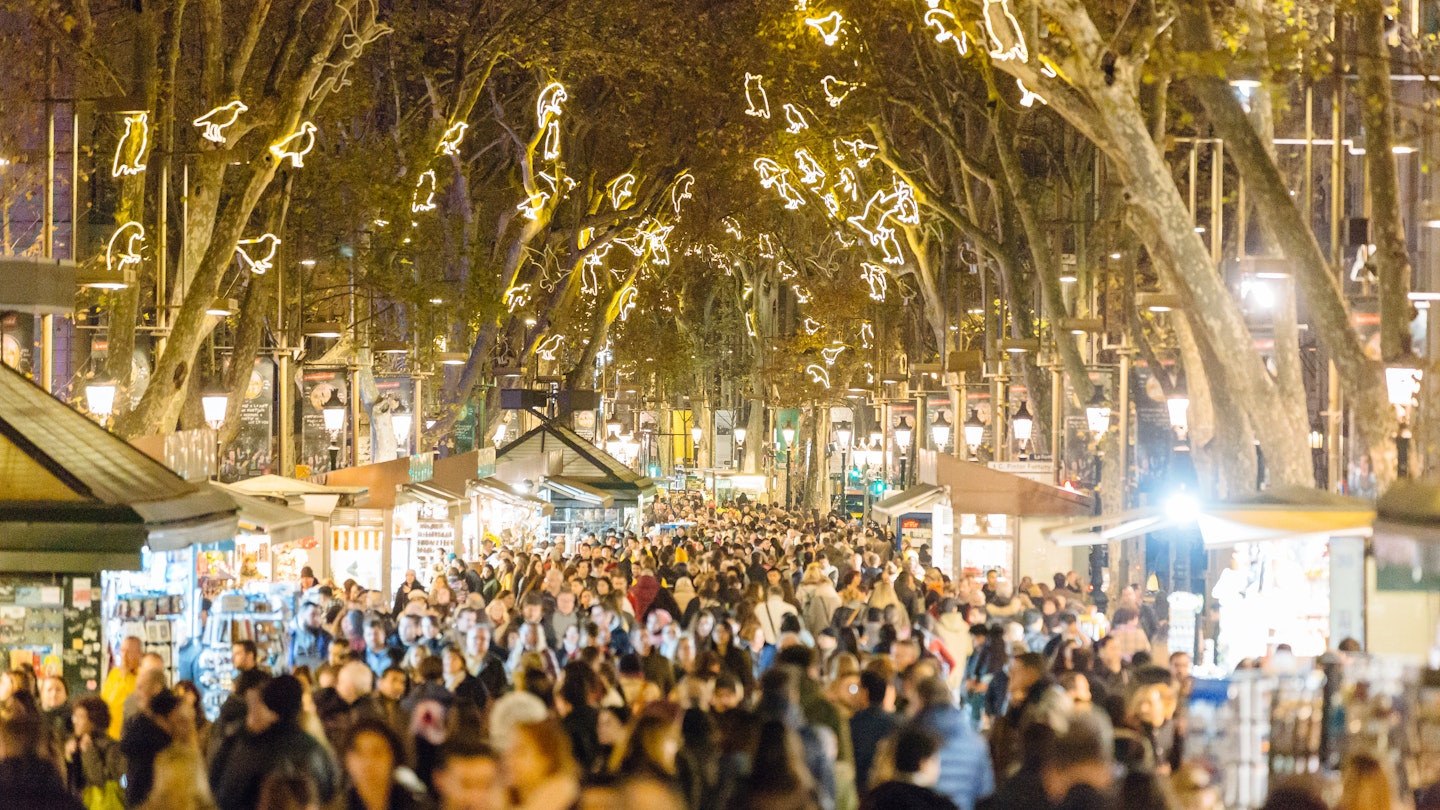Summary

As December arrives in Barcelona, festive lights adorn the streets, market stalls are being set up, and a mischievous figurine is subtly included in nativity displays. Colorful decorations illuminate the historic district’s ancient alleyways, while the Passeig de Gràcia promenade transforms into a cascade of twinkling lights, guiding passersby to the enchanting holiday light show projected on the magnificent face of Gaudí’s Casa Batlló.
The Christmas season is particularly significant in Barcelona, a city renowned for its vibrant celebrations and deep-rooted traditions, infused with an element of spectacle. Below are some expectations and guidelines for experiencing the finest holiday markets and culinary delights, ensuring your visit resonates with the spirit of the season.

Holiday Traditions in Barcelona
It can be confidently asserted that no one celebrates Christmas like the Catalans and their iconic caganer. This figurine can be found on souvenir shelves year-round, yet its prominence truly emerges during the Christmas season. The term “pooper,” derived from its literal translation, refers to a traditional figurine nestled within Catalan nativity scenes. Although newcomers might find it unconventional, the caganer is a cherished tradition among Catalans, symbolizing good fortune and fertility. Christmas markets abound with caganers alongside their artistic and pop-culture counterparts, showcasing a remarkable variety ranging from politicians to beloved fictional characters, offering delight and surprise.

Tío de Nadal: A Unique Gift-Giver
As you explore the Christmas markets in Barcelona, you cannot overlook the cheerful face and bright red nose of the delightful Tío de Nadal. This traditional Catalan Christmas log is placed under every tree. Children nourish the log and cover it with a blanket to keep it warm until Christmas Day, when it fulfills its role by “delivering” presents. To receive gifts, children must hit the log with sticks while singing a cheerful song. This delightful log is colloquially known as “Caga Tío,” highlighting the humor and whimsy of the tradition.
Seasonal Foods and Flavors
The array of sweets and hearty dishes distinctly associated with Christmas makes Barcelona a culinary delight for food enthusiasts. A popular treat, torró, a traditional nougat bar crafted from honey and almonds, is available throughout the year in various flavors and textures, including soft and hard nougat. Visit one of the numerous Vicens locations in the city for a chance to sample this festive delicacy.
For a more substantial dish, seek out a traditional Catalan restaurant that serves escudella, a savory soup featuring a light broth and large pasta shells filled with meat. Alternatively, explore the bechamel-covered canelones, another pasta dish typically prepared on December 26, utilizing the leftover meat from the previous day’s feast.

Christmas Markets and Fairs
If you are in search of European Christmas markets in Barcelona, be sure to visit the Fira de Nadal located in front of La Sagrada Família within the L’Eixample district and the Barri Gòtic area, featuring the Fira de Santa Llucia, a cherished annual event near the Catedral de Barcelona dating back to 1786. The stalls predominantly sell traditional Christmas decorations and religious figurines, but you can also discover unique items including ceramics and jewelry crafted by local artisans.
After exploring the stalls, direct your attention to Port Vell for the Fira de Nadal, established annually along the waterfront. It features an array of food vendors from local establishments, an ice skating rink, a carousel, and a Ferris Wheel, providing extensive entertainment for all ages. Alternatively, journey to Montjuïc for additional excitement at the Christmas Fair in Poble Espanyol, an open-air museum reflecting architectural styles from across Spain, accompanied by a myriad of bars and restaurants. During December, this “Spanish Village” embraces the Christmas spirit with the Christmas Fair, a ticketed event featuring concerts and entertainment, including circus acts and magic shows. The dreamy village, adorned in vibrant lights, also includes thematic areas for exploration, such as learning about the hidden histories of beloved holiday customs in “Tradicionarius” or visiting Santa and the Three Wise Men in “Wishland.”
Continuation into the New Year
Although New Year’s Eve—celebrated with a glass of cava and 12 grapes at midnight—may seem to mark the conclusion of Barcelona’s festive season, the celebrations persist until Three Kings Day on January 6. The festivities commence the previous evening with the Three Kings Parade, where on January 5, the three kings arrive by ship at the port, welcomed by the mayor of Barcelona before commencing their city tour. Families gather along the streets to observe the vibrant floats and collect the sweets tossed to the onlookers.
On the morning of Three Kings Day, one cannot help but notice the long queues outside local bakeries, eagerly awaiting the traditional Tortell de Reis, or King’s Cake, a delightful custom of the day. Resembling a brioche with a marzipan filling, each cake is baked with a concealed small toy and bean. The fortunate finder of the toy is crowned king for the day, while the one who discovers the bean is responsible for purchasing next year’s cake!





